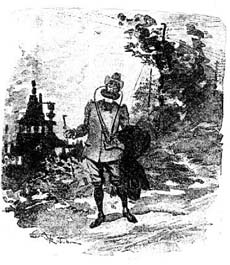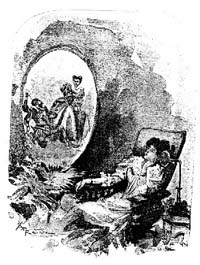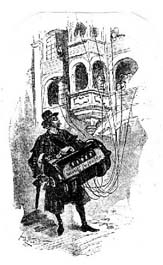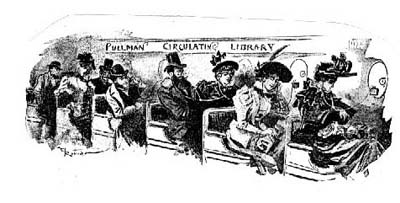Books Are Dead,
Long Live Books
Priscilla Coit Murphy
Tell us how it
will be with letters, with literature and books a hundred years hence!
If by books you are to be understood as referring to our innumerable collections
of paper, printed, sewed and bound in a cover announcing the title of
the work, I own to you frankly that I do not believe (and the progress
of electricity and modern mechanism forbids me to believe) that Gutenberg's
invention can do otherwise than sooner or later fall into desuetude as
a means of current interpretation of our mental products… . Our grandchildren
will no longer trust their works to this somewhat antiquated process,
now become very easy to replace by-—
That statement was
written for Scribner's magazine in 1894, in enthusiastic response
to recent technological developments. Its author, Octave Uzanne, completed
his prediction with the word "phonography." For him, the reproduction
of sound heralded the end of print mediation between author and audience.
Because "reading…soon brings on great weariness,"1 phonography would ease the physical fatigue (from the positions imposed by reading) and excessive burden on the eyes. Dismissing concern about the expense and weight of phonographs, he was confident that they would soon become quite inexpensive and portable-suitable for taking a "promenade" using "small cylinders as light as celluloid penholders, capable of containing five or six hundred words," (fig. 6.1).2 The only draw-back-the absence of illustration would be met by the simultaneous enjoyment of "Mr. Edison's kinetograph," projecting pictures on the living room wall in synchrony with the phonographic narrative (fig. 6.2).3
 |
 |
| Fig. 6.1 | Fig. 6.2 |
Uzanne did anticipate some attendant social change: "Libraries will be transformed into phonographotecks," and bibliophiles, who would become "phonographiles," "will still surround themselves with rare works…bound in morocco cases."4 Questioned about the elitism of the proposed scheme, Uzanne saw "the people" served through "fountains of literature in the streets," wired for casual listening, along with communal listening in specially wired apartment buildings or train cars (see figs. 6.3 and 6.4).5
 |
 |
| Fig. 6.3 | Fig. 6.4 |
Above all, the relationship
between author and reader was to change. "Readers" would now
be able to hear the voice of the author directly. The author, having duly
copyrighted his voice and narration, could preserve the benefit of his
works for himself, while the nature of the celebrity-author would change:
Men of letters will not be called Writers…but rather, Narrators… . The art of utterance will take on un-heard-of importance… . The ladies will no longer say in speaking of a successful author, "What a charming writer!" All shuddering with emotion, they will sigh, "Ah, how this 'Teller's' voice thrills you, charms you, moves you."6
Were Uzanne writing
today, one might expect words like "orality," "interactivity,"
and "media convergence" to appear, yet the core of his discussion
was a trope on novel machinery and a few of the immediate, first-order
effects of adoption. However, many of the assumptions underlying his view
of the future have been present within later spates of predictions that
the book-as-we-know-it would soon disappear. Before embarking on discussion
of those assumptions, it is worth examining some of the later waves of-it
now seems-premature obituaries for the bound book.
Uzanne's exuberant
futurism came with the earliest awareness of what has come to be called
the Technological Age. A certain fearlessness, similar to that seen in
events like the 1893 World's Exposition, would soon give way to doubts
in the face of increasing complexity as mass society employed technology
in its pursuits. Just as society became acquainted with one new medium,
along would come another. Those most directly affected-other than the
audience-found themselves repeatedly challenged to divine what would happen
to their own medium as a new one appeared.
In 1919 Rupert Hughes,
writing for Bookman, discussed another writer who "viewed
with alarm" the theft of children's attention, as moving pictures
lured them away from books. "The child of today knows more than is
good for it. Murder and arson are its daily food."7
Equally worried about the minds of adults, a 1925 publisher saw the public's
attention overwhelmed, to the detriment of books:
Personally I agree with the pessimists that all these things, especially the overproduction of magazines and newspapers filled with trivial and cheap contents, injure the book business. Human beings have only a certain maximum of leisure, and if they spend an evening reading a sex magazine and listening to the radio there is no time left for a good book.8
However, he had faith
that books would yet prevail: "Ultimately, I believe all of these
so-called obstacles will redound to our advantage, for surely automobiles
and radios and movies, yea, even sex magazines, stimulate the mind; and
eventually when the mind is sufficiently stimulated and in the right direction
we have a new book-reader."9
In 1927 the technology of convenience led a journalist to guess that radio would soon steal print media's thunder. He drew the inference from an MIT dinner at a New York hotel, at which the first "radio newspaper" was published. He foresaw an automatic printing machine in each home, radio-operated and able to offer whole pages of newspapers instantaneously as news broke.10 While he did not make the leap to home printing of book pages, eleven years later another writer was to extrapolate a little further, this time imagining the precursors of microfilm. Arthur Train, writing in 1938 for Harper's, predicted that fifty years hence the "man of 1988" would not only receive his newspaper via facsimile machine, but he would possess few books, reading them at home from "tiny reels of film" projected onto the screen of a "reading machine."11
continued
Notes
1. Octave Uzanne; "The End of Books," Scribner's l6 (August 1894): 224.
2. Illustrations for Uzanne's article were by A. Robida.
7. Rupert Hughes, "Viewing with Alarm," Bookman 49 (May 1919): 263.
8. "Book Production Is Not Increasing," Current Opinion (March 1925): 305.
10. Silas Bent, "Radio Steals the Press's Thunder," Independent 119 (9 July 1926): 33.
11. Arthur Train, "Catching Up with the Inventors," Harper's 176 (March 1938): 369-370.